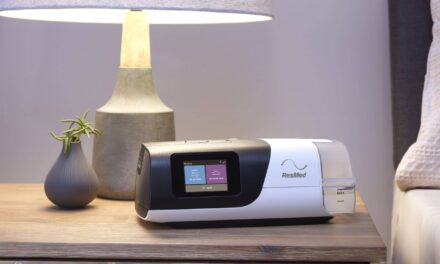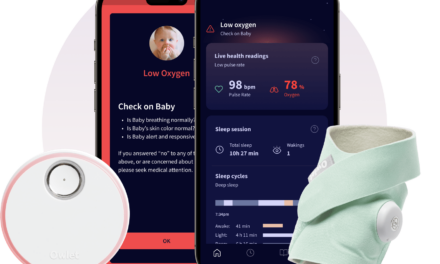By Sree Roy
The ongoing global semiconductor shortage did not spare the sleep medicine industry. The dearth of semiconductors, on top of a massive Philips’ breathing devices recall, has led some manufacturers to omit the microchips in CPAP machines that allow for the cloud connectivity needed to track progress in smartphone apps and transmit metrics remotely to providers. This real-time connectivity enables clinicians to make pressure changes or comfort adjustments remotely to help patients adjust to their therapy more quickly.
CPAP microchips and the connectivity they enable are “a great tool to help patient’s success by increasing comfort and compliance,” says Lauri Leadley, CCSH, RPSGT, founder and president at Valley Sleep Center in Arizona.
While fully functional to treat sleep-disordered breathing, CPAPs without these cloud-connectivity chips lack remote monitoring for clinicians and digital health solutions for patients. Sleep medicine clinicians say it’s not an ideal situation because remote monitoring1 and patient self-monitoring2 have been shown to improve CPAP adherence.
Sleep professionals now find themselves searching for ways to manage the shortage. While, overall, the situation is slowly improving—such as with the passage of the CHIPS and Science Act of 2022, which is designed to boost domestic manufacturing of semiconductors—the impacts of the CPAP chip shortage will be felt for years to come. After all, patients who receive SD card-only devices today may not be able to upgrade for the next five years—that’s the year 2028.
How Clinicians Are Coping
For sleep physician Peter C. Gay, MD, FAASM, consultant and professor of medicine for the Mayo Center for Sleep Medicine, the hardest part has been finding a home medical equipment (HME) provider that has a positive airway pressure device available—“any machine,” he says, from any US or international manufacturer, with or without a chip. “This is a huge public health issue and it’s not on the public radar. We can’t get CPAP machines,” Gay says.
Many sleep professionals from all over the country have lamented to me about this problem. Some report becoming more flexible about who can start on alternative therapies such as oral appliances. Others prioritize CPAPs for patients with the most severe apnea and/or the most serious comorbidities, while everyone else waits at the back of the queue.
Many have switched the makes and models of CPAPs they prescribe—away from their long-time favorites to whatever brand is available, which may even sway the makeup of the US CPAP market in the long term.
A few have expressed frustration over the performance of their less-favored CPAP brands. Unclear as to the merits of this claim, I asked Gay—who dismissed this concern as unfair bias. “I have seen no bench testing” that says one brand of device is better than any other, he told me. Gay says he puts his trust in the US Food and Drug Administration (FDA), noting the FDA would only have cleared the device for marketing if it does, in fact, keep the airway open during sleep. So he tells patients what devices are currently available and reassures them he’ll confirm via a data download that their sleep-disordered breathing is effectively treated.
Clinicians also lament losing the prescription management side of remote monitoring. The lack of connectivity can mean phone tag between the HME and the sleep practice–as well as back-and-forth prescription and CPAP download data faxes. “Hopefully you’re not changing it more than three times,” Gay says, or it’s a sign the patient needs to come into the PSG lab.
Gay adds that remote prescription management is not a big concern for him due to the prevalence of APAP devices—which auto-adjust the pressure as needed—though he does sometimes change an APAP’s minimum or maximum pressure setting. “Changing prescriptions [remotely] is cutting-edge stuff but not crucial to management,” he says.
How Patients Are Coping
Patients naturally weigh the benefits of CPAP use against its hassles. For those with disconnected devices, adding extra steps for data sharing introduces another item to the list of hassles.
In most cases, patients can still get an overview of their data from the device’s home screen each morning. Clinicians should ensure their patients know how to do this, including where to look and which buttons to press. Unfortunately, “it doesn’t have all the bling—the graphs and the charts,” Gay says.
Also, clinicians find it frustrating to explain to patients that self-monitoring features won’t be part of their therapy experience. “They might be enchanted with the idea of participating in their care. And then I have to backtrack and show them how to get a few numbers off the machine,” Gay says.
Still, patients should be encouraged to participate as much as they can. “I tell them to look every morning and that if the AHI is less than ‘X,’ and you’re using it at least 6 hours, you’re going to get the benefit of this machine,” he says.
The added friction of making an extra trip to the HME to do the download is unfortunate too. In particular, it can be a hardship for patients who have moved farther away or those who prefer virtual follow-ups for health concerns (such as the “tripledemic” of this winter) or simply convenience’s sake. Not to mention sky-high gas prices that add to the patient burden of the extra trip.
Patients who receive CPAPs without chips may not be able to upgrade when connected devices become readily available again (assuming that happens within the next few years). Generally, third-party payors will pay for a new device only once every five years.
Some devices may be able to have a chip inserted later, but many will not. “Chips cannot be added to card-to-cloud devices. However, clinicians can still use AirView to log data from patients on these devices by manually downloading the data off patients’ device SD cards. And users can still see their nightly therapy data on the device’s home screen each morning,” says Gregory Dench, senior director of connected solutions at ResMed, a company I applaud for stepping up to meet the enormous demand for new CPAPs.
“ResMed remains committed to its connected strategy, helping millions of users and their clinicians experience the benefit of digital health. Chips are a key component to these solutions, and we’re doing all we can to procure more.”
Solutions for CPAPs Without Chips
From an individual sleep professional or practice standpoint, developing and maintaining relationships with customer service-oriented HME suppliers is an immediate solution that they can maximize. “If you have good relationships with vendors, you can get things done fairly well,” Gay says. Ensuring the vendor understands which specific data downloads reports you need is key to minimizing excessive phone calls.
Larger sleep disorders centers can invest in equipment (such as card readers) for a wide variety of CPAP devices, so patients can have the download done at their regularly-scheduled appointment, eliminating a separate trek to their HME supplier. While Mayo Clinic has a workstation for virtually any power cord and any card reader, including for a wide variety of different years’ devices, Gay concedes that all that equipment is “way too expensive” for the mom-and-pop sleep practice to have.
Some sleep physicians are waiting to start patients on therapy until a connected device becomes available. They express concern that patients may give up prematurely without remote and self-monitoring tools. But this is a controversial solution. “I think we should discourage this,” Gay says. “Because it downplays the need for therapy. They went through all these other steps, and now they are not even getting started on therapy?!”
CPAP makers themselves also play a role.
“ResMed is addressing this on three main fronts,” Dench says. “1) Continuing to talk with our suppliers, and their suppliers, and so on in order to increase the volume of chips and, therefore, the number of connected devices we can ship out; 2) temporarily producing hundreds of thousands of non-connected card-to-cloud devices for the sake of patients waiting long periods of time for much-needed treatment; and 3) developing new communications modules that are less dependent on the types of components that are currently more difficult to procure.”
Advocacy and government efforts are also moving toward solutions, though these strategies take time to execute.
In 2022, the American Academy of Sleep Medicine led an effort to advocate for the prioritization of medical devices in chip allocation, meeting with members of Congress and the White House and submitting letters to government agencies. A response letter from the Administration for Strategic Preparedness and Response noted that “America invented the semiconductor but produces 10 percent of the world’s supply—and none of the most advanced chips…The CHIPS and Science Act of 2022 will unlock hundreds of billions more in private sector semiconductor investment across the country, including production essential to national defense and critical sectors.”3
ResMed’s Dench says, “We appreciate the government’s efforts to facilitate conversations between manufacturers and suppliers, which can have immediate positive impacts. Efforts to boost chip production in various markets like the US CHIPS Act can yield long-term value, which would be positive, but to address today’s needs, we continue to urge our chip suppliers—and their suppliers—to increase their allocation to ResMed and other connected medical device makers who use these chips to improve and save lives.”
A few years from now, as supply chain issues subside, we will likely again take for granted that CPAPs transmit data effortlessly via the cloud. Until then, clinicians and patients must make do with available technology.
References
1. Clavaud F, Cooper V. Does CPAP remote monitoring improves compliance and adherence? Eur Resp J. Sep 2016;48 (suppl 60):PA3428.
2. Malhotra A, Crocker ME, Willes L, et al. Patient engagement using new technology to improve adherence to positive airway pressure therapy: A retrospective analysis. Chest. 2018 Apr;153(4):843-50.
3. American Academy of Sleep Medicine. HHS responds to AASM advocacy on medical device prioritization. 8 Dec 2022. Available at aasm.org/hhs-responds-to-aasm-advocacy-on-medical-device-prioritization
Illustration 231814180 © Nuthawut Somsuk | Dreamstime.com




